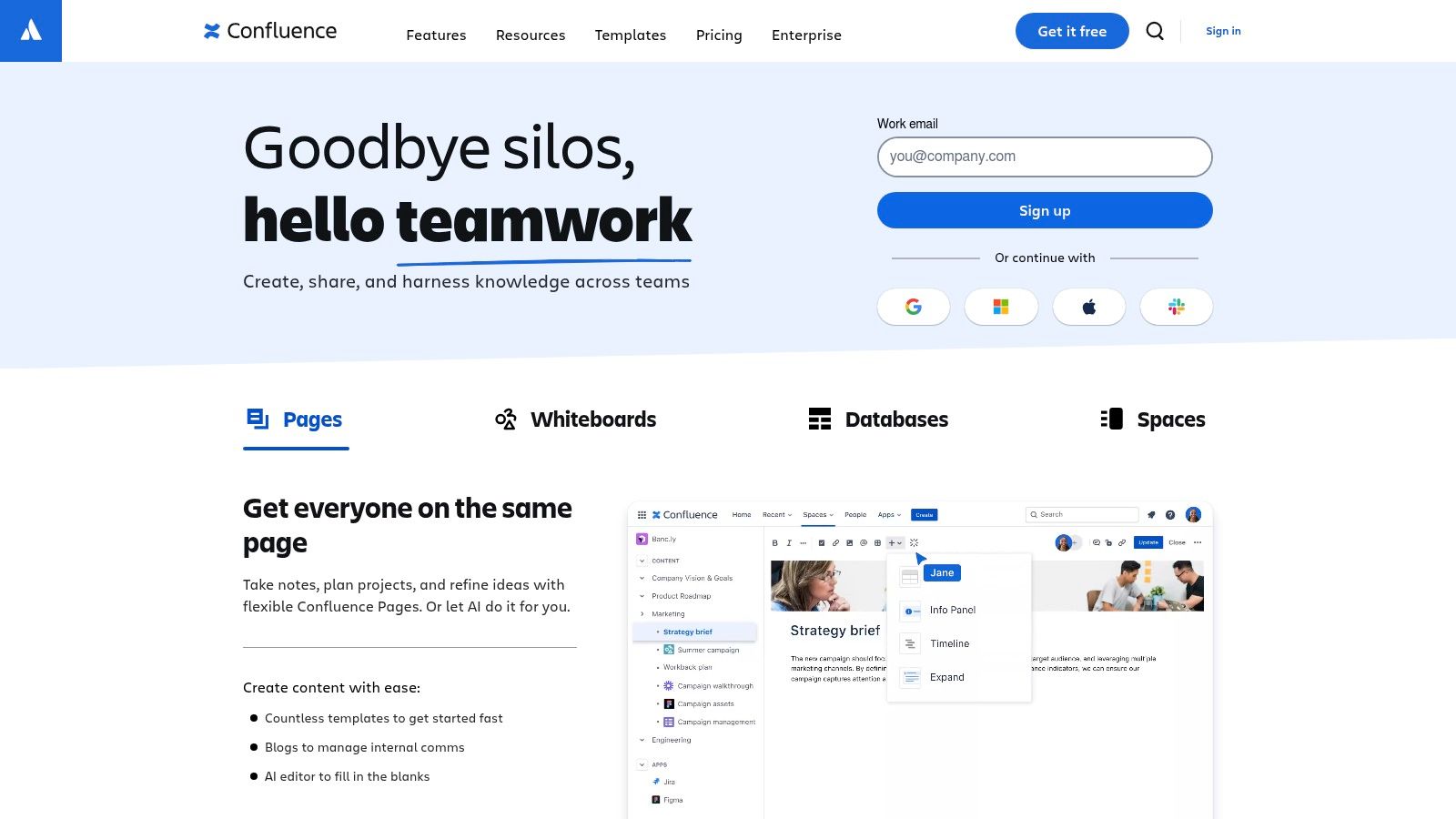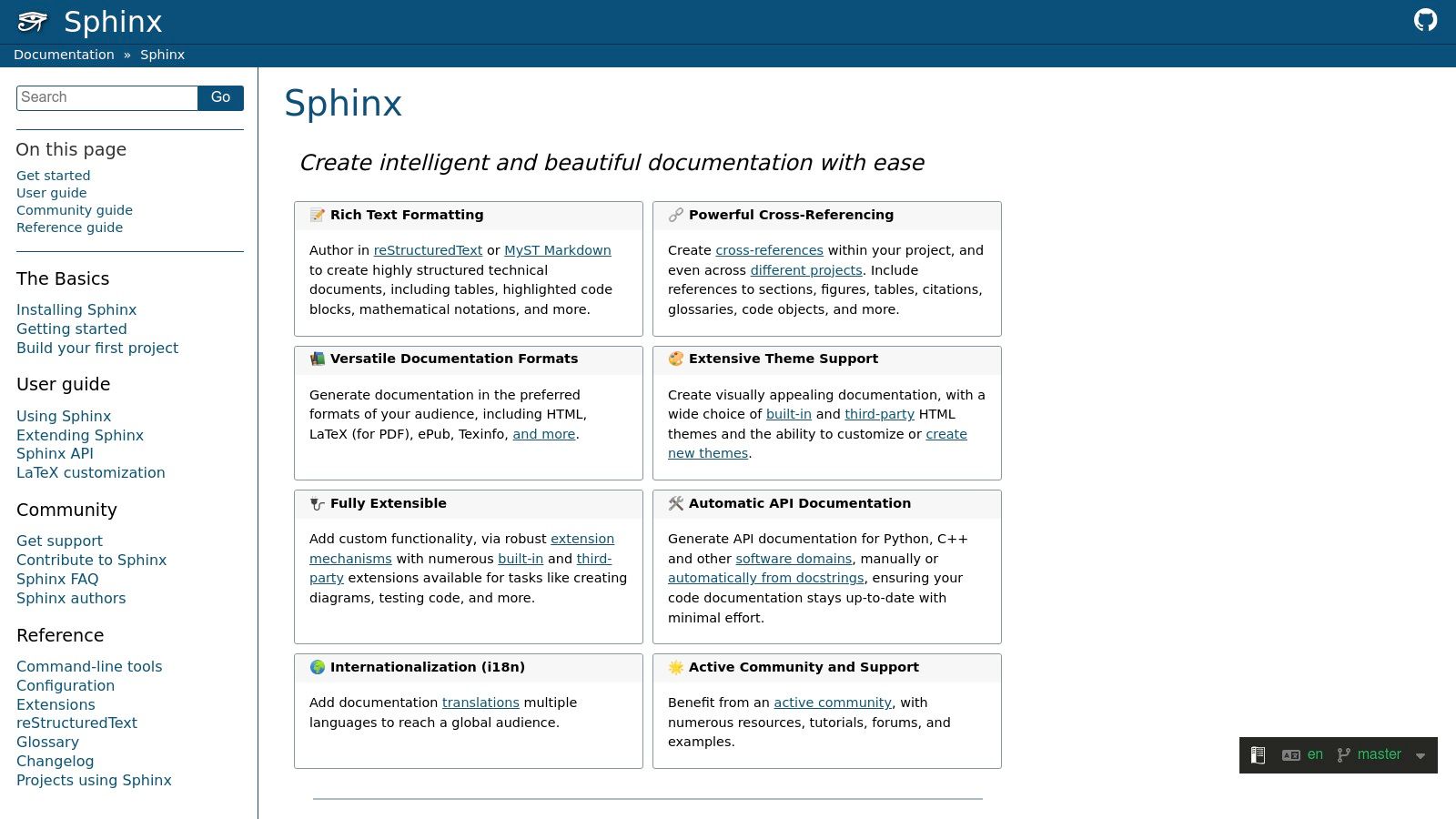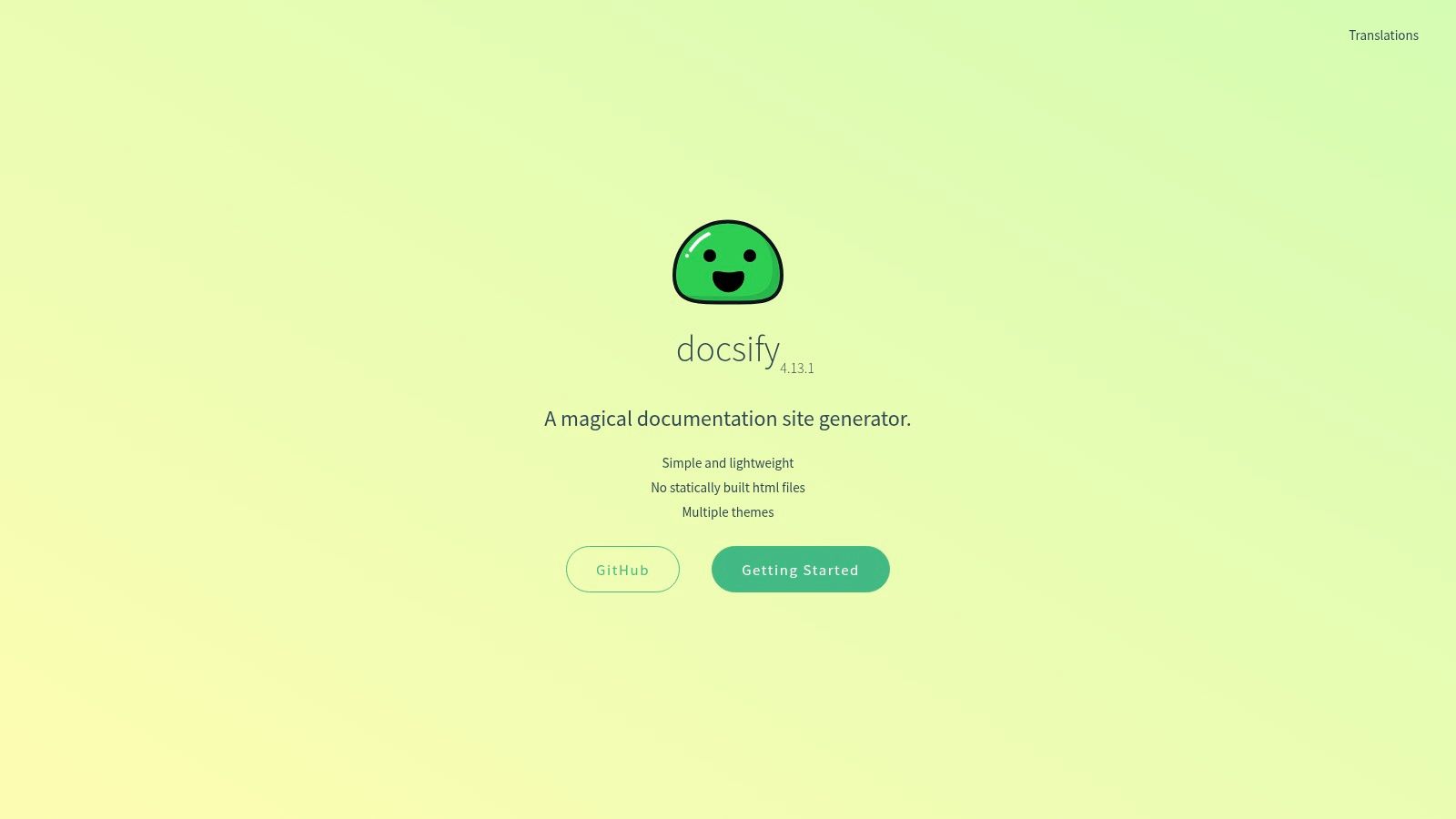Level Up Your Docs: Templates to the Rescue!
Well-made technical documentation is essential for any business that offers software, online services, or hardware products. It helps new users get started, guides them through problems, and enables support teams to work efficiently. But starting from scratch every time you create documentation takes a lot of time and energy. Remember those hefty user manuals that came with early software? While online help systems were a big improvement, making each guide still required major effort.
The keys to great documentation are keeping things clear, consistent, and easy to find. This is exactly where technical documentation templates shine. These templates give you ready-made sections and a clear structure to work with. They help you maintain the same style across all your docs while following documentation best practices. Beyond just saving time, templates help you build a knowledge base that both customers and team members can easily use and understand.
We'll show you seven proven technical documentation templates that can make your documentation process much smoother. These templates will help you create professional documentation faster and more consistently, giving you more time to focus on other important work. You'll learn practical ways to use each template to improve your documentation workflow.
1. ReadMe.io Template
ReadMe.io helps teams build clear and engaging documentation for APIs and products. The platform stands out for making it easy to create and maintain documentation that developers and users actually want to read.
One of the best things about ReadMe.io is how it automatically generates API reference docs from your code. This means your documentation stays accurate without manual updates, letting your team focus on more important work.
Key Features & Benefits:
- Interactive API Explorer: Test API endpoints right in the docs
- Markdown Support: Write content easily with custom variables
- Version Control: Track documentation changes clearly
- Analytics: See how users interact with your docs
- Customization: Match your brand's look and feel
- Smart Search: Help users find info quickly
Pros:
- Simple to customize and brand
- Great API documentation tools
- Strong search capabilities
Cons:
- Higher cost for bigger teams
- Requires internet connection
Tips for Getting Started:
Plan your documentation structure first. Use the built-in templates to save time. Take advantage of custom variables and analytics to improve your docs over time.
Pricing: Several tiers available based on team size and needs. See the ReadMe.io website for current pricing.
Technical Needs: Just needs a stable internet connection since it's cloud-based.
Want to learn more? Check out these helpful resources:
2. GitBook
GitBook helps teams easily create and manage high-quality documentation. Whether you need technical docs, API specs, product guides, or internal knowledge bases, GitBook makes the process simple and collaborative. Its clean interface and version control features make it perfect for support teams and IT departments.
What makes GitBook stand out is how easy it is to use while still enabling effective team collaboration. The platform simplifies documentation creation so everyone can contribute and stay up to date.
Key Features:
- Real-time Collaboration: Multiple team members can edit documents simultaneously, making it easy to work together and keep information current
- Version Control: Works seamlessly with GitHub and GitLab to track changes and manage documentation like code
- Multi-Language Support: Create docs in multiple languages to serve a global audience
- Custom Domains: Host documentation on your own domain for a professional look
Pros:
- Simple, Modern Interface: Easy to navigate and focus on writing
- GitHub Integration: Works perfectly with existing GitHub workflows
- Free Tier Available: Great option for individuals and small teams to get started
Cons:
- Limited Design Options: Not many choices for customizing the look and feel
- Performance: Can be slow to load with large documentation sets
Pricing: Offers free and paid plans for teams and businesses. Visit their website for current pricing details.
Technical Requirements: Works in any modern web browser. Git integration requires proper access setup.
Setup Tips:
- Try the free plan first to test features
- Connect your Git repository for version control
- Plan your documentation structure before starting
How It Compares: While tools like Confluence offer more features beyond docs, GitBook excels at focused documentation. It's ideal for technical teams that want a dedicated platform for creating and managing documentation.
3. Docusaurus
Docusaurus, created by Facebook (now Meta), is a fantastic tool for building documentation websites. It combines an easy content creation experience with deep customization options, making it ideal for software projects and API documentation.
This open-source platform stands out by taking advantage of React's capabilities while keeping things simple for content writers. It lets you manage complex documentation needs without getting overwhelmed.
Key Features:
- React Foundation: Perfect for teams who already know React and want to build custom components
- Smart Search: Makes finding specific information quick and easy
- Version Control: Keep documentation for different product versions organized in one place
- Multiple Languages: Translate your docs to reach users worldwide
- Open Source: No costs and full access to customize the code
- Speed Optimized: Fast loading times for better user experience
What's Great:
- Costs nothing to use
- Works smoothly with React
- Pages load quickly
- Strong community support
What Could Be Better:
- Needs React knowledge for advanced changes
- Takes more time to set up than basic tools
Getting Started Tips:
Starting with Docusaurus is straightforward. Install the command line tool, create a new project, and follow the setup guide. You can write content in Markdown and deploy to services like Netlify or Vercel. The official docs walk you through each step.
How It Compares:
While tools like Jekyll or Hugo might be simpler at first, Docusaurus really shines when you need more advanced features. It's especially good for software teams who update their docs often and need version control.
Pricing: Free
What You Need: Node.js and npm (or yarn). Knowledge of Markdown and React helps.
Website: https://docusaurus.io
Docusaurus is an excellent choice for teams looking to build quality documentation. Though it takes some technical know-how to get started, its rich features and active community make it worth the investment. It works well for both small projects and large-scale documentation needs.
4. MkDocs: Simple Documentation Made Better
MkDocs is a focused static site generator built specifically for creating clean project documentation. If your team knows Markdown, MkDocs offers a simple way to build organized, searchable docs. It works especially well for smaller projects that need clear documentation without extra complexity.
The MkDocs Magic
At its core, MkDocs converts Markdown files into a complete static website. This means you can host your docs almost anywhere – from GitHub Pages to Amazon S3. It includes a development server to preview changes in real-time as you write. The built-in search and customizable themes help readers find and understand your content quickly.
Main Features:
- Pure Markdown: Write docs in plain Markdown – perfect for teams who already use it
- Quick Builds: Creates documentation in seconds, making updates fast and easy
- Small Footprint: Minimal requirements mean faster load times and simpler hosting
- Live Preview: See changes instantly with the built-in dev server
- Theme Options: Adjust the look and feel to match your needs
- Smart Search: Help users find exactly what they need with built-in search
Advantages:
- Easy learning curve for Markdown users
- Fast documentation updates
- Simple to host and maintain
Limitations:
- Fewer extensions compared to tools like Sphinx
- Basic theming options
Real-World Uses:
- API Documentation: Perfect for explaining how to use your API
- Team Knowledge Base: Keep internal docs organized and searchable
- Product Guides: Create clear user guides and manuals
- Simple Websites: Works for basic business sites too
Getting Started:
- Run
pip install mkdocsto install - Use
mkdocs newto create your first project - Edit
mkdocs.ymlto set up your site - Add community themes and plugins as needed
Cost & Requirements:
MkDocs is free and open-source. You just need Python installed to run it.
Quick Comparison:
While Sphinx offers more advanced features, MkDocs focuses on simplicity and speed. Choose MkDocs when you want to create good documentation quickly without a steep learning curve.
Website: MkDocs Official Site
MkDocs helps teams create clear, useful documentation without unnecessary complexity. It's a solid choice for support teams, tech departments, and anyone who needs to build readable docs fast.
5. Confluence Templates
Confluence is Atlassian's documentation platform that stands out for its rich template library and team collaboration features. While it offers powerful capabilities for large companies, smaller teams may find it complex and costly.
At its core, Confluence serves as a central hub for storing and managing all types of documentation – from technical specs to meeting notes. For example, when releasing new software, teams can use ready-made templates for release notes and user guides to maintain consistency. Support teams build knowledge bases to handle customer issues faster, while IT teams document system changes and incident responses.
Key Features:
- Rich text editor for easy content creation and formatting
- Template library with pre-built formats for various doc types
- Atlassian integration works seamlessly with Jira and other tools
- Permission controls to manage content access and editing rights
Benefits:
- Team collaboration with real-time editing and commenting – perfect for gathering feedback (See also: Bug Reporting Best Practices)
- Enterprise-ready with features built for large organization needs
- Connects to other tools through extensive integration options
Drawbacks:
- Higher costs that may not suit small team budgets
- Learning curve requires time to master all features
- Basic markdown support compared to dedicated markdown editors
Website: https://www.atlassian.com/software/confluence
Pricing:
Free for up to 10 users
Standard: $5.75/user/month
Premium: $15.50/user/month
Enterprise: Contact sales
Setup Tips:
- Plan your space structure first – create separate areas for teams/projects
- Use templates to maintain consistent documentation
- Set up proper access permissions from the start
- Connect with your existing tools like Jira for better workflow
You might be interested in: Comparing Documentation Tools
While Confluence requires investment in both cost and learning time, it provides excellent value for larger teams that need a complete documentation system with strong collaboration features.
6. Sphinx
Sphinx is a documentation generator written in Python that excels at creating technical documentation. It works best with Python projects but can document other software too. Developers appreciate how easily it integrates with code and produces clean, professional documentation.
The tool uses reStructuredText as its source format – a simple markup language that makes writing documentation straightforward. From this source, you can create documentation in multiple formats like HTML, PDF, and ePub. This makes it easy to share documentation in whatever format works best for your users.
Key Features:
- reStructuredText Support: Easy-to-learn markup language that keeps documentation simple to write and maintain
- Multiple Output Formats: Create HTML, PDF, ePub and other formats from a single source
- Code Documentation: Automatically generates API documentation that stays in sync with your code
- Cross-Referencing: Build links between different documentation sections for better navigation
- Themes and Extensions: Customize the look and add extra features through themes and extensions
Pros:
- Rich Features: Includes search, indexing, and version control integration
- Python Integration: Works seamlessly with Python codebases
- Highly Customizable: Adapt the output to match your needs and branding
Cons:
- Learning Takes Time: Getting comfortable with all features requires practice
- Setup Can Be Complex: Configuration for larger projects needs careful planning
- Better for Code: While it can handle general documentation, it's built for software docs
Setup Tips:
- Install with:
pip install sphinx - Use
sphinx-quickstartto create your first project - Check out extensions to add more features
- Learn the basics of reStructuredText first
How It Compares:
Tools like Docusaurus and MkDocs are easier to start with but offer fewer features. Choose Sphinx when you need advanced capabilities, especially for software documentation.
Pricing: Free and open-source
Website: https://www.sphinx-doc.org
Sphinx works well for teams that need detailed, customizable documentation. While it takes time to learn, it delivers professional results, especially for software projects. The initial learning curve pays off with powerful documentation capabilities.
7. Docsify
Docsify is a straightforward documentation generator that converts Markdown files into websites instantly. What makes it special is that it creates pages on-the-fly – no build process needed. Simply edit your Markdown files and see the changes live on your site. This makes it an excellent choice for teams who need to maintain up-to-date documentation without complex technical overhead.
The beauty of Docsify lies in its simplicity. You don't need to deal with complicated build tools – just point it to your Markdown files and you're ready to go. It comes with several themes to match your brand, built-in search functionality, and a plugin system to add more features when needed. This makes it perfect for small businesses that want professional documentation without hiring dedicated developers.
For support teams, the instant updates are invaluable. Make a quick edit to your docs and users immediately see the latest version, ensuring everyone has current information.
Key Features:
- Dynamic page generation: No static HTML files to manage
- Multiple theme options: Customize your documentation's look
- Built-in search: Help users find information quickly
- Plugin support: Add extra functionality as needed
Advantages:
- Quick setup: Get started in minutes
- No build process: Edit and publish instantly
- Fast loading: Minimal code for quick performance
Limitations:
- SEO challenges: May need additional optimization
- JavaScript required: Won't work if JavaScript is disabled
- Navigation limits: Can be difficult with large documentation sets
While Docsify works best for small to medium documentation projects, larger sites might want to consider alternatives like GitBook or Read the Docs for more robust features.
Getting Started:
Setting up Docsify is simple. Install it via npm, create an index.html file, and configure it to load your Markdown content. The official documentation provides clear setup instructions.
Website: Docsify Documentation
Want to enhance your documentation? Check out our guide on Make Training Videos to create comprehensive learning resources that complement your written docs.
7-Template Tech Doc Comparison
| Template Name | Implementation Complexity 🔄 | Resource Requirements ⚡ | Expected Outcomes 📊 | Ideal Use Cases 💡 | Key Advantages ⭐ |
|---|---|---|---|---|---|
| ReadMe.io Template | Medium | High | Interactive, dynamic API docs | API & product documentation | Customizable, engaging API explorer |
| GitBook | Low | Medium | Clean, collaborative documentation | Team knowledge sharing & technical guides | Modern interface, excellent integrability |
| Docusaurus | Medium-High | Low-Medium | High-performance, versioned docs | Developer-driven documentation sites | Open-source, robust performance |
| MkDocs | Low | Low | Fast, static site documentation | Markdown-based project documentation | Easy to use, speedy build times |
| Confluence Templates | High | High | Robust, enterprise-level collaboration | Large organizations & enterprise settings | Extensive integration, powerful collaboration |
| Sphinx | High | Medium | Detailed, code-centric documents | Software and Python project documentation | Extensive customization, technical depth |
| Docsify | Low | Low | Lightweight online documentation | Quick setup for Markdown docs | No build process, simplicity |
Ready to Write?
Picking the right documentation tool requires careful thought about your specific needs. A simple tool like MkDocs or Docsify works well for small teams and basic projects. Larger organizations handling complex products may prefer robust platforms like GitBook, Docusaurus, or Confluence.
When selecting a tool, check how easily it fits into your current processes. Make sure it works smoothly with your code management system and other development tools. Also consider both the upfront costs and ongoing time needed to maintain it.
Getting started is simple with most tools. You'll find helpful templates and guides for the initial setup. Try out a few options to see which one feels most natural for your team. No matter which tool you pick, focus on writing clear, accurate content. Good documentation helps users solve problems on their own and reduces support requests.
Key Takeaways:
- Pick based on your needs: Think about team size, technical skills, and project scope
- Check tool compatibility: Make sure it works with your existing systems
- Write clearly: Good content matters more than fancy features
- Watch your budget: Balance costs with features and maintenance needs
Looking to improve your support process beyond documentation? Screendesk helps teams deliver better customer support through video. Record your screen, host live video calls, and build a video knowledge base to solve issues faster. The platform captures browser details for better bug reports and integrates with your helpdesk system. Try Screendesk to start improving your first-contact resolution rates and customer satisfaction scores.







